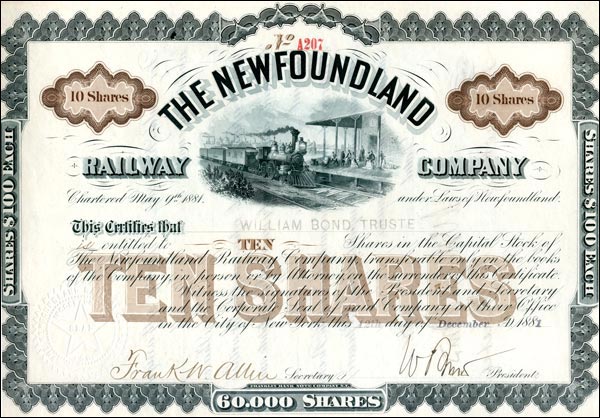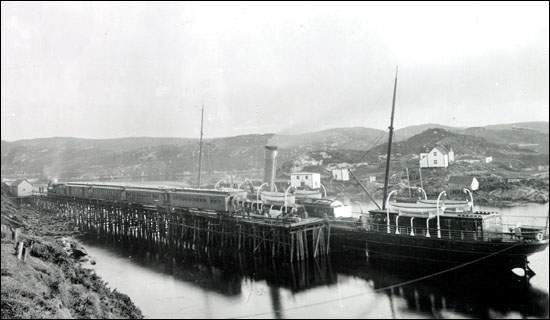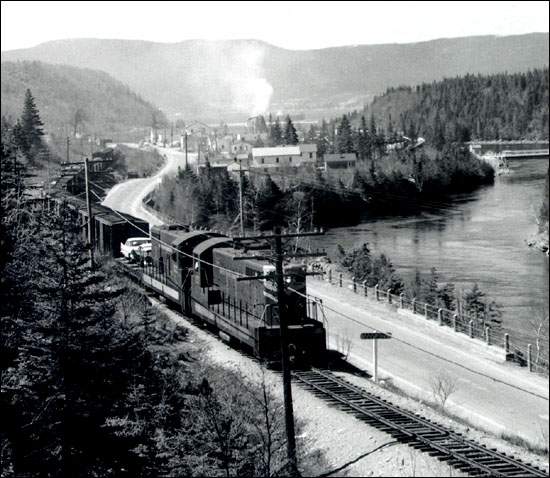The Newfoundland Railway played a crucial role in the development and modernization of Newfoundland, spanning five key periods in its history. Here is a detailed account of its evolution:
Construction Period (1881-1897)
The idea of constructing a railway in Newfoundland gained momentum in the late 19th century, inspired by North American railway expansion. In 1881, the Newfoundland Railway Company, led by New York lawyer A.L. Blackman, began building a narrow-gauge railway from St. John’s to Halls Bay with a branch to Harbour Grace. Despite early progress, financial difficulties led to the company going into receivership by 1884, completing only 57 miles of track

From 1881 to 1884 the company built a 57 mile line from St. John’s to Whitbourne before going into receivership.
Reproduced by permission of Kurt Korneski. © 2016
Construction resumed in 1890 under Scots-Canadian contractor Robert G. Reid, who agreed to build the remaining line for $15,600 per mile. Reid’s efforts culminated in the completion of the main line to Port aux Basques by 1897, marking the railway’s full operational status
Operation by the Reid Family (1898-1923)
The Reid family assumed control of the railway in 1898 under a controversial contract that included extensive land grants and a 50-year operating agreementm. Robert G. Reid and later his sons expanded the railway, incorporating branch lines and developing related infrastructure. Despite political opposition and financial challenges, the Reid Newfoundland Company played a pivotal role in Newfoundland’s economic development through improved transportation and resource exploitation.
Government of Newfoundland (1923-1949)
By the early 1920s, the Reid Newfoundland Company faced financial insolvency, prompting the government to assume control in 1923. The railway, renamed the Newfoundland Railway in 1926, was managed by general manager Herbert J. Russell, who implemented gradual improvements despite the economic constraints of the Great Depression and World War II. During the war, the railway’s strategic importance grew, supporting military operations and infrastructure development.

Probably the Bruce at the wharf.
From the A.R. Penney Collection. Courtesy of Harry Cuff Publications.
Canadian National Railways (1949-1978)
Following Newfoundland’s confederation with Canada in 1949, the Newfoundland Railway was integrated into Canadian National Railways (CNR). This period saw significant capital investments, modernization, and increased freight traffic. The dieselization program between 1953 and 1959 replaced steam locomotives with diesel engines, enhancing operational efficiency.
TerraTransport (1978-1988)
In 1978, CNR rebranded its Newfoundland operations as TerraTransport, focusing on improving service and infrastructure. Despite these efforts, declining traffic and financial losses led to the eventual closure of the railway in 1988. The end of the Newfoundland Railway marked the conclusion of an era, but its legacy continued to influence the province’s transportation and economic landscape.

When the railway was taken over by C.N. in 1949, there was a rapid increase in the amount of freight carried.
From the A.R. Penney Collection. Courtesy of Harry Cuff Publications
Economic Impact and Legacy
The Newfoundland Railway was instrumental in opening up the island’s interior, facilitating the movement of people and goods, and stimulating economic growth. It played a critical role in the development of the mining and forestry industries and supported the strategic needs during wartime. Although the railway is no longer operational, its historical significance remains a key chapter in Newfoundland’s development narrative.
For more detailed information, you can explore the resources available at Heritage Newfoundland
